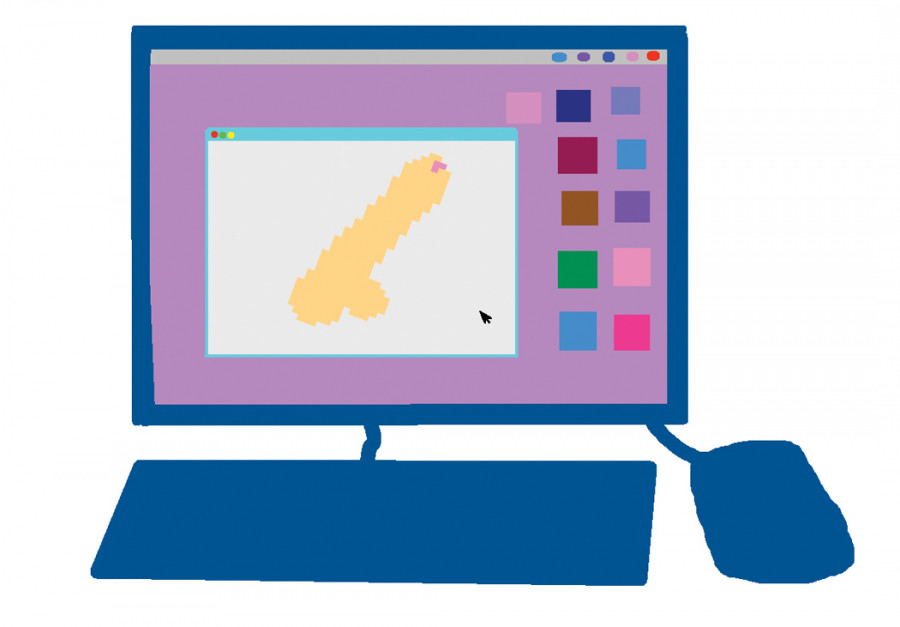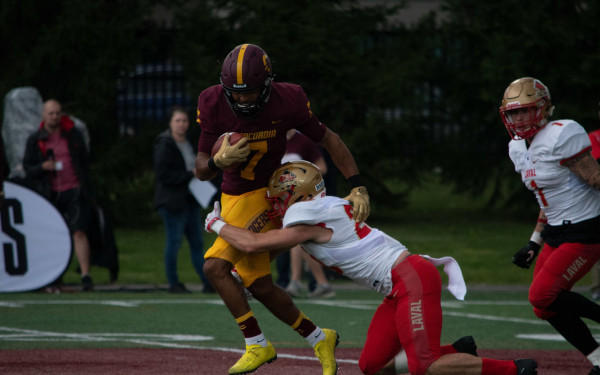League of Lechery
E-Sports Community is “Toxic” to Female Players
If you attended the 2015 League of Legends World Championships at the Rialto Theatre, you got a prize: a Japanese schoolgirl.
Not an actual human being, mind you. With the online purchase of a $30 dollar ticket, attendees received the Academy Ahri Skin, an outfit for one of the characters in the game. Ahri is a humanoid fox with nine tails—taken from Korean mythology—who has the capabilities of a mage, or an assassin.
League of Legends is a game where players choose “champions,” and fight each other online. The champion designs run the gamut from human to nine-tailed fox to monster from the void, and they all come with a variety of purchasable skins. But Ahri’s Academy skin, the Japanese schoolgirl, is emblematic of a part of League of Legends that some players find troubling.
League of Sexism—a fan blog on Tumblr—wrote about the art that came with the skin.
“Ahri’s distinct lack of personality here [is] perpetuating a stereotype of the beautiful young girl obsessed with both her appearance and her phone,” they wrote. “[It] is about the lowest common denominator for a shot like this.”
“I do not feel represented by the game’s characters,” said Julie Guertin, a John Molson School of Business student who’s been playing League for five years. “They’re all huge-breasted, tiny-waisted, bootylicious girls—or men with 18-packs.”
Others feel like that’s the point.
“The game really doesn’t try to represent anyone, it tries to throw you into a fantasy world,” said Dimitri Kontogiannos, coach of Concordia’s League of Legends team and VP Finance for eSports Concordia.
“I find the characters are interesting but not representative of the players,” said Daniel Rom, a Concordia Jazz student, and five-year player who has since quit the game. “I don’t even think they were made to be anything but cool.”
“Most aren’t hypersexualized and have cool lore,” said P from Montreal Gamer Girls, a Facebook community devoted to providing a platform for girls to discuss video games. She preferred to remain anonymous.
The problem, to some players, is that “cool” isn’t represented the same way between genders. In a lengthy post in the Riot Games forums, user L2 Sentinel broke down the situation—excluding non-human and non-adult characters, she found that the designs of 78.5 per cent of human women champions were sexualized, just 3.5 per cent of human men were.
“I just don’t understand why every female champion has to be young, thin, and attractive,” she wrote. “But they aren’t afraid to deviate … when they are making a male.”
The most recent numbers from Riot said over 90 per cent of players were male and that 85 per cent of players were between 16 and 30.
Beyond appearance, women characters in the game often end up in supporting roles, or on the periphery of fighting as archers and casters—according to a piece by Patrick Mackey, the former League of Legends columnist at Engadget.
Outside of in-game gender-roles, the game presents another challenge for players.
“League of Legends is known for its toxic community,” said Matan Kushner. He is the president of Dawson eSports Association and works closely with Riot Games.
“I think the biggest sexism is really just like, people saying girls don’t play video games, girls are bad at the game or that girls only play as certain roles,” said Kandace Kwong, three-year player of League. “There’s nothing that really appeals to me from the community.”
Julie Guertin from JMSB was also quick to point out biases inherent in the social environment of the game.
“The moment they find out I’m a girl and I fuck up,” Guertin said, “they blame it on me being a girl.”
However, experiences vary.
“As a girl being a gamer, it’s hard. But I’d say that League of Legends is one of the games that does it best,” P.
And Riot is trying. Their lead designer of social systems, Jeffrey Lin, announced in July that homophobic, racist, and sexist encounters have been reduced to two per cent of matches. Riot implemented a tribunal system that lets players call out and punish each other for questionable behaviour.
Not everyone is satisfied. Eloy Tripetujen, another longtime fan said, “if I could change something, I’d increase the penalties for being a dick in a game.”
Jérémie Jetten, another other player, said that the recent measures really do work.
“Most players are mature and can overcome virtual insults and still have fun,” he said.
Given Riot’s reputation for constant updating, players have hope for change. In the meantime, some players are exploring alternatives to the sexualized characters in the game.
“There are some male characters that are pretty normal looking. Or bugs. Or animals,” Guertin said.


_600_832_s.png)

_600_375_90_s_c1.jpg)

2_600_375_90_s_c1.jpg)
